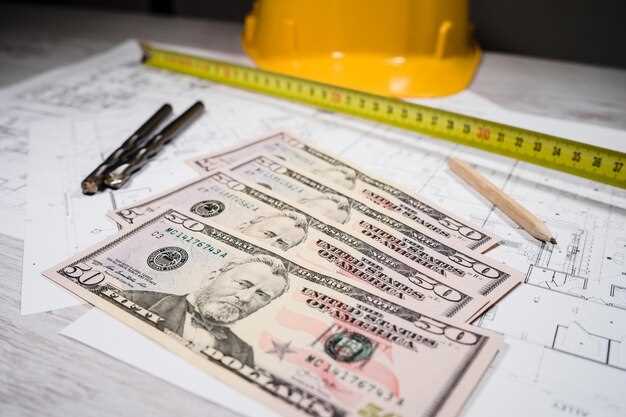
Preventive maintenance is a strategic approach that focuses on the routine inspection and servicing of equipment to ensure optimal performance and longevity. By regularly maintaining machinery, organizations can significantly reduce the likelihood of unexpected failures and costly repairs, ultimately leading to substantial savings over time. The essence of this proactive strategy lies in its ability to identify potential issues before they escalate into major problems, enabling businesses to allocate resources more efficiently and effectively.
One of the primary advantages of implementing a preventive maintenance program is the reduction of long-term operational costs. When equipment is well-maintained, it operates more efficiently, consuming less energy and material resources. Additionally, fewer breakdowns result in reduced downtime, ensuring that productivity levels remain high. These factors contribute directly to enhanced savings and allow organizations to focus on growth rather than reactive measures addressing failures.
Moreover, preventive maintenance can extend the lifespan of costly assets. Regular servicing not only keeps equipment running smoothly but also helps to preserve its value over the long term. By investing in maintenance today, companies can avoid the significant expenses associated with premature replacements and extensive repairs. This long-term perspective on asset management underscores the critical role preventive maintenance plays in fostering a financially sustainable operational model.
Maximizing Equipment Lifespan Through Regular Inspections

Regular inspections are a critical component in maximizing the lifespan of equipment. By frequently assessing the condition and performance of machinery, businesses can identify potential issues before they escalate into significant problems. This proactive approach not only enhances the reliability of equipment but also contributes to overall operational efficiency.
During scheduled inspections, technicians can detect wear and tear, misalignments, or other mechanical faults. Early detection allows for timely repairs, which can prevent catastrophic failures that often lead to costly downtime. Moreover, addressing minor issues promptly ensures that the equipment operates at optimal performance, further extending its usable life.
Incorporating a systematic inspection routine enables organizations to gather valuable data on equipment performance over time. This analysis helps in understanding trends in reliability, and it assists in making informed decisions regarding maintenance schedules and replacement timelines. By investing in regular checks, companies can optimize maintenance strategies, ensuring resources are allocated effectively.
Additionally, regular inspections promote safety within the workplace. Reliable equipment translates to fewer accidents and injuries, which can have profound financial implications for any organization. By prioritizing the health of their machinery, businesses protect not only their investments but also their workforce.
In conclusion, the importance of regular inspections cannot be overstated. They are essential for maintaining reliability, enhancing performance, and maximizing the lifespan of equipment. Organizations that commit to this practice will likely experience lower long-term costs and greater operational success.
Quantifying Savings: Comparing Costs of Repairs vs. Preventive Actions

In the realm of maintenance management, understanding the financial implications of repairs versus preventive actions is crucial for maximizing reliability. Preventive maintenance entails regular inspections, servicing, and minor repairs aimed at averting major breakdowns. In contrast, reactive maintenance occurs after a failure, often resulting in substantial unexpected costs.
The costs associated with unplanned repairs can escalate quickly. Emergency repairs typically involve not only the immediate expenses of fixing the equipment but also production downtime and potential loss of revenue. For example, a manufacturing facility experiencing a machine failure may incur thousands in lost productivity, in addition to repair costs. These expenses accumulate rapidly and can significantly affect a company’s bottom line.
Conversely, preventive maintenance fosters reliability and helps in budgeting by allowing businesses to forecast costs accurately. By investing in regular maintenance schedules, companies can take advantage of economies of scale, as routine servicing is generally less expensive than emergency repairs. The predictable nature of preventive actions enables businesses to allocate resources more effectively, resulting in fewer unexpected expenditures over time.
Numerous studies have shown that organizations implementing preventive maintenance strategies witness a notable return on investment. For instance, it’s estimated that every dollar spent on preventive maintenance can save between $4 to $10 in repair costs. This significant ratio illustrates the long-term savings associated with building a reliable maintenance program.
To effectively quantify these savings, companies should track metrics such as downtime, repair frequency, and total maintenance costs. Using these data points, organizations can clearly illustrate the financial benefits of preventive maintenance compared to reactive repairs. Furthermore, the enhancement in equipment reliability serves to improve overall operational efficiency, empowering companies to achieve greater productivity and profitability.
Enhancing Reliability and Performance with Scheduled Maintenance
Scheduled maintenance plays a crucial role in enhancing the reliability of equipment and systems across various industries. By adhering to a regular maintenance schedule, organizations can significantly reduce the likelihood of unexpected breakdowns. This proactive approach ensures that potential issues are identified and addressed before they escalate into costly repairs or operational interruptions.
The performance of machinery and equipment tends to degrade over time due to wear and tear. Scheduled maintenance helps in restoring and maintaining optimal functionality. Regular inspections, adjustments, and component replacements help keep systems running at peak performance levels, thereby increasing overall efficiency.
Furthermore, scheduled maintenance helps to establish a predictable operational environment. When equipment is regularly maintained, organizations can better anticipate its performance, leading to improved planning and resource allocation. This predictability not only enhances reliability but also contributes to reduced downtime, as issues are resolved before they impact operations.
In addition to improving reliability, scheduled maintenance can also extend the lifespan of equipment. By taking care of machinery through regular check-ups and servicing, businesses can avoid premature failures that necessitate costly replacements. This longevity translates into better return on investment, as organizations spend less on capital expenditures related to equipment procurement.
Ultimately, prioritizing scheduled maintenance fosters a culture focused on reliability and performance. Companies that invest in routine maintenance demonstrate a commitment to operational excellence, which can also be seen as a competitive advantage in their respective markets. Regular maintenance not only secures the present but also safeguards the future efficiency of operations.




